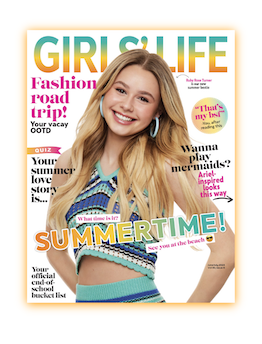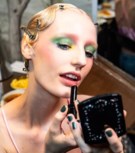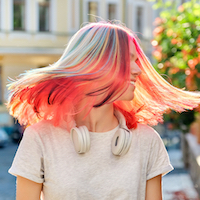STYLE
Fashion
What's the deal with the strawberry dress?
The gauzy pale pink Lirika Matoshi strawberry dress gives off *major* summer vibes—but the trend has continued even into fall.
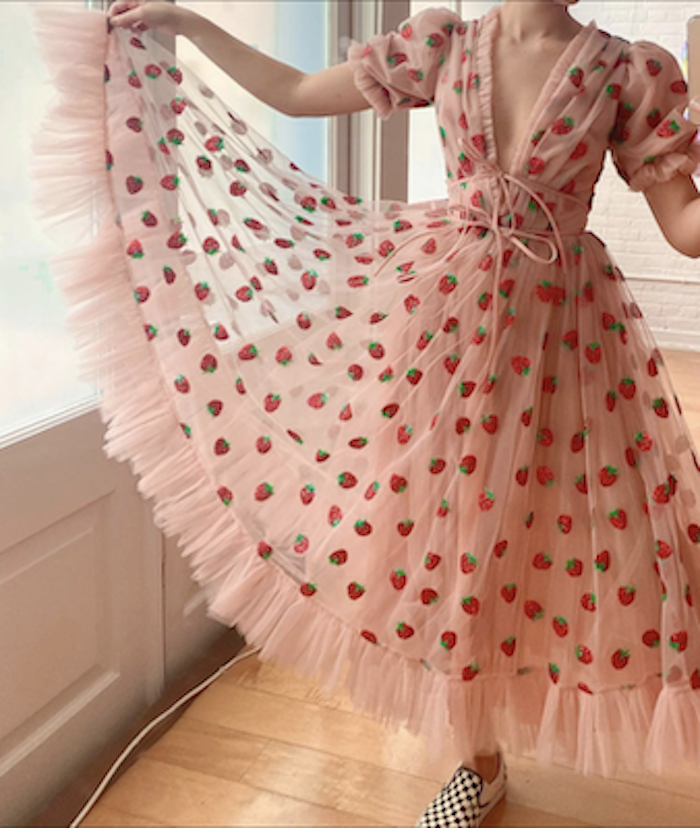
Image: Instagram.com/lirikamatoshi
This dress took the internet by storm when makeup artist and model Tess Holliday debuted it at the Grammy Awards back in January. The reception of the dress at the time was negative, and in the words of Holliday herself, was a result of fatphobia (people being discriminated against because of their size). Over the summer, TikTok documented a rise in love for the strawberry dress. So how did a once-dismissed look become the hottest fall fashion vibe?
Let's rewind for a second. The strawberry dress was the creation of Lirika Matoshi, a 24 year old designer from Kosovo. She grew up in the midst of the Kosovo War, which greatly affected her large family. As Lirika said in a New York Times article: "I grew up with horror stories of how much damage the war did to our country...My only dream is that one day I will travel and I will represent my country and I will help them as much as I can." After moving to New York, Lirika started on Etsy, selling her handmade accessories: Glittery socks, embroidered tights and intricately crafted chokers, among others.
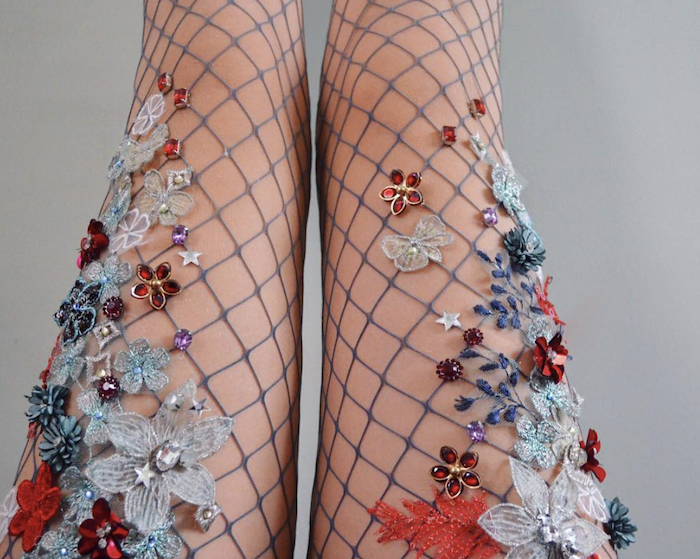
Image: Instagram.com/lirikamatoshi
Inspired by her fashion designer sister Teuta, Lirika learned more about fashion design techniques and how to establish her designs as an offical fashion brand. Lirika gained success, and with help from her sisters, she established a factory based in Kosovo, where unemployment is espectially high for women. This factory makes a point to only hire women. (#rememberyourroots!) Teuta and Lirika frequently collaborate and both have a similar aesthetic: indulgent and frothy. We are *living* for their designs. Outfit envy, anyone?
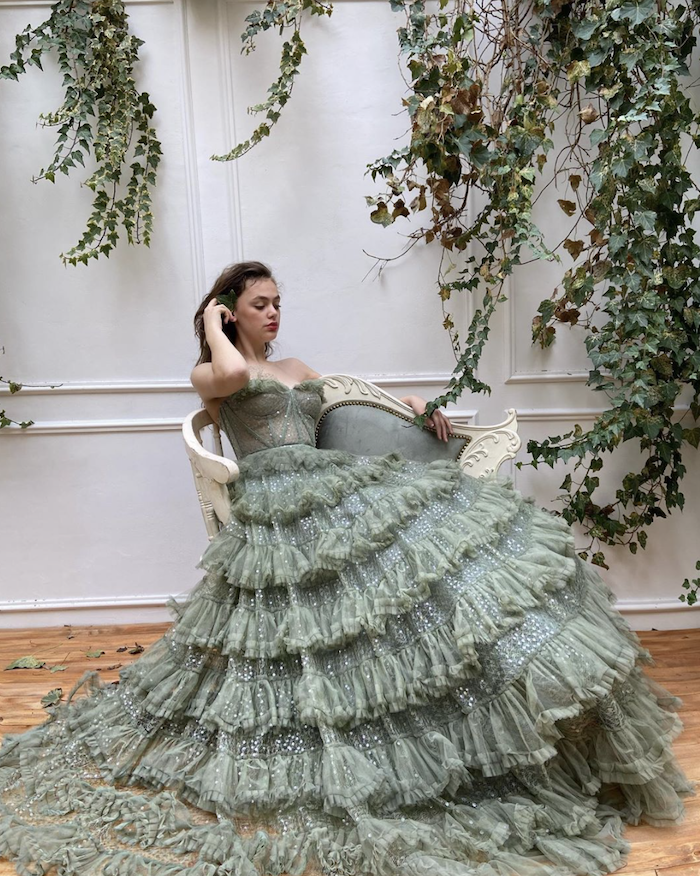
Image: Instagram.com/TeutaMatoshi
So, why did the strawberry dress go off during the pandemic?
"The silly and beautiful strawberry dress is a piece of whimsy and enchantment in a world where that is absent. It represents the escape from the pressure of modern society, back to a time where one could live in a flowered cottage, baking delightful treats all day," says Sabina L, 17.
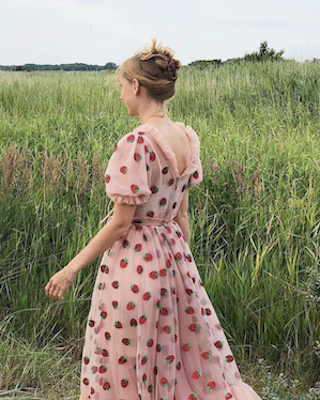
Image: Instagram.com/lirikamatoshi
From the rise of Covid-19 to the upcoming election, the Black Lives Matter movement to the fires in California, we are living in an unprecedented world. In uncertain times, we need things that inspire hope. The strawberry dress gives us just that—a reason to get dressed up, go out to a flower-covered field and feel like a strawberry fairy.
Who else spends the day in a rotating assortment of sweatpants, hoodies, and fuzzy socks? (Hard to feel inspired to dress to impress in Zoom school, right?) It was fun at first, but am I the only one feeling bored and uninsipired by once-beloved jammies? This over the top, gorgeous, glam dress gives the perfect opportunity to go out (with a color coordinated mask, natch) and enjoy the day.
This dress also feeds the cottagecore frenzy, romanticizing the simpler life of nature and crafting, homemade recipes and cute little farm animals. The strawberry dress, with its pastel colors, puffy sleeves, and swinging skirt, fit right into the dream. It has a carefree, relaxed sort of charm, the sort of dress you'd wear biking around a quaint town, buying baguettes, cheese and flowers.
While I'm *so* glad everyone is finding solace in the strawberry dress, it's important to remember where it first came from.
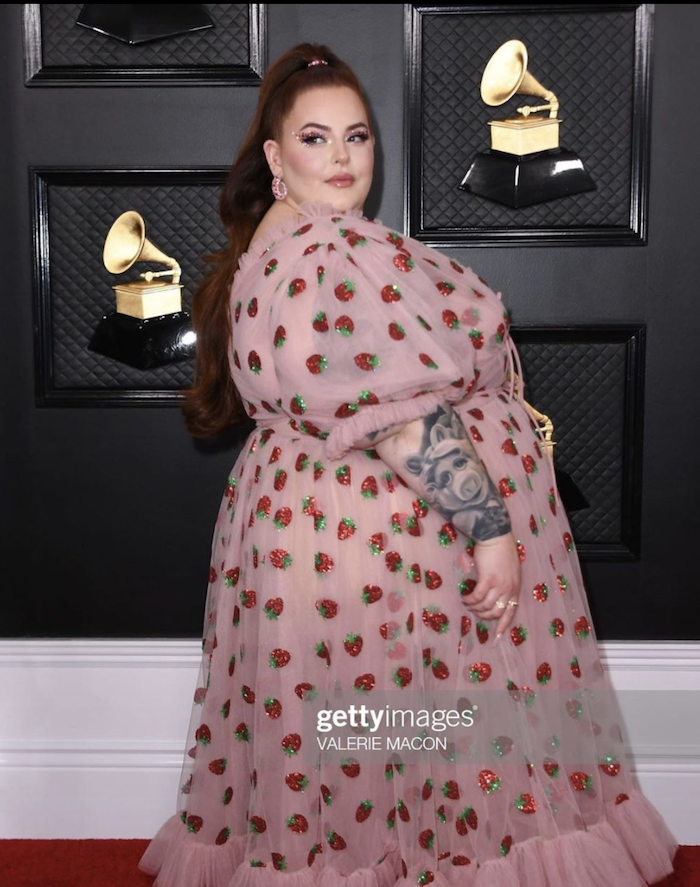
Image: Instagram.com/tessholliday
We need to remember that Tess Holliday was bullied and body shamed online when she wore the now-famous strawberry dress. The truth of the matter is that body shaming does exist. There's a clear double standard here—why was the exact same dress booed on a plus-size woman but praised on thin women? "It's a beautiful dress, but it was only taken seriously once people deemed it trendy because people who fit the beauty standard started wearing it," says Sonia G., 18. Like it or not, we need to acknowledge that the world of fashion is often beneficial for those who are slender and harmful to those who aren't.
How do we fix this issue?
First, we need to be paying attention to body-neutral influencers and activists. Ignore the people who try to tell you how to "slim down" or get a "perfect bikini body." (BTW, the perfect bikini body is your body, with a bikini on it. Simple as that). Surround yourself with postivity—this includes positive people who embrace their natural selves.
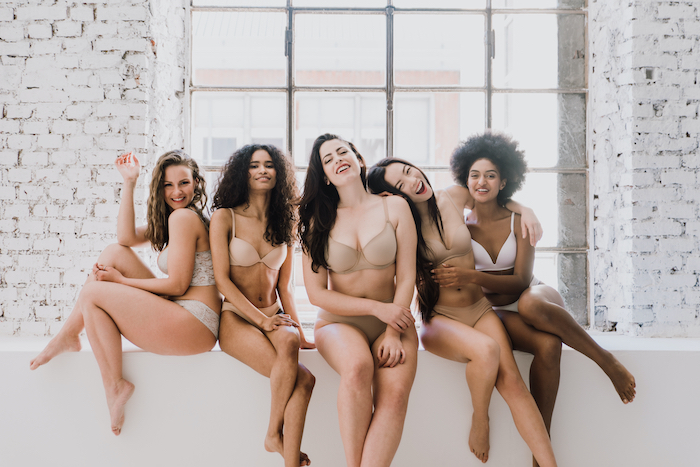
Second, spend your money wisely. Big corporations know what you're insecure about, and they know how to profit off of it. "Something that has helped me personally is realizing how much money corporations make off of exploiting my insecurities to sell me something. That's helped me reevaluate how I see my body and why I'm told to see it that way," says Sofia O., 17. Support stores that support you. (Pssst—Universal Standard, Girlfriend Collective, and Sotela all practice what they preach. Plus, they're all sustainable. Score!)
Third, stop using fat as an insult. "Fat" is a body measurement. It shouldn't be a negative or an insult any more than "skinny" should be a compliment. Saying "I feel fat today" only continues the cycle. This is saying that fat is synonymous to ugly or bad. Use different words to express how you feel. Also, be kinder in your words. This is your body we're talking about! Your body keeps you alive, protects you, carries you. Instead of wishing your body looked a certain way, thank your body for doing what it already does.
Lastly, we need more body positivity in the media, more representation of non-skinny people on TV and in movies. Instead of waiting until the end of time for change to magically happen, we need to *make* it happen. By educating yourself and others, you can inspire change in your world. If more people make it clear that they won't stand for gatekeeping fashion or the shaming of natural body types by giving time and attention to people who embrace body positivity, then corporations would have to open their eyes and reevaluate.
Currently, the strawberry dress comes in sizes up to 18. While this isn't the end all be all for body inclusivity, it's a start. As Holliday stated in an interview with Vulture, "[Lirika] could expand her sizes, but Lirika dressed me and that's a lot more than top designers have ever done...She might not be doing it perfectly but at least she cares." And that's what we need—more designers who care enough to try.
Ladies, I know that tackling body inclusivity is going to be a long process. While we continue this battle, let it be in our Lirika Matoshi strawberry dresses.
All GIFs via Giphy
POSTED IN dresses, outfit, summer, Fashion, STYLE, star style, real girl style, V-Day fashion

 become a contributor
become a contributor
